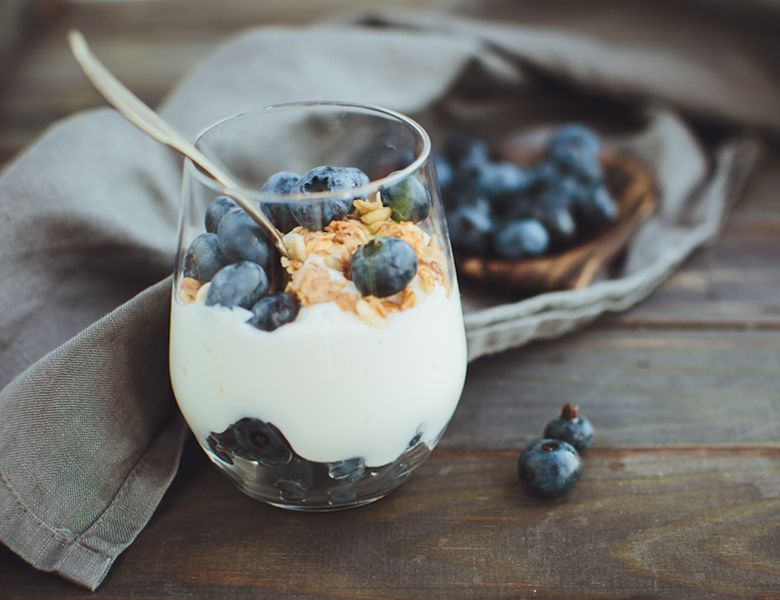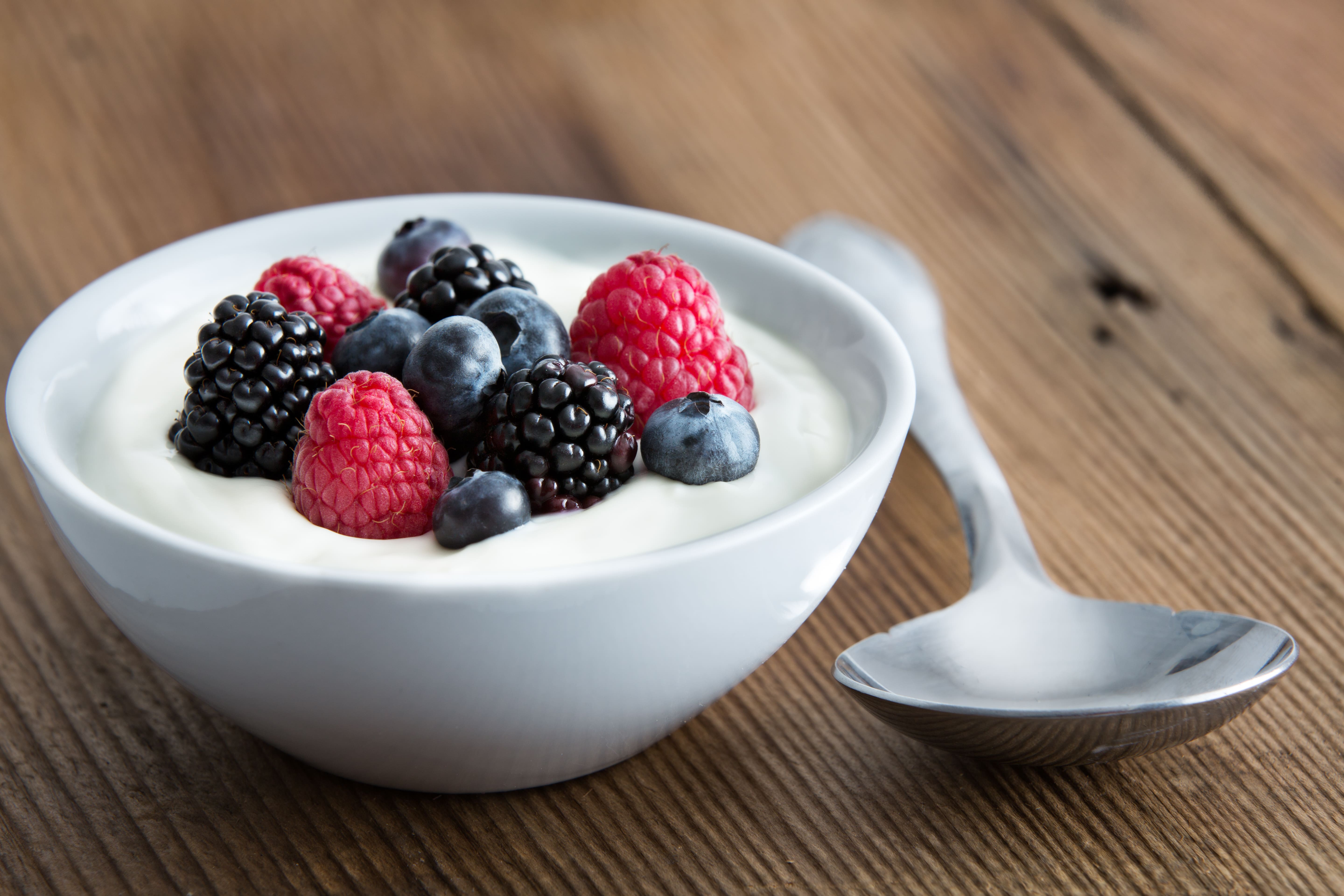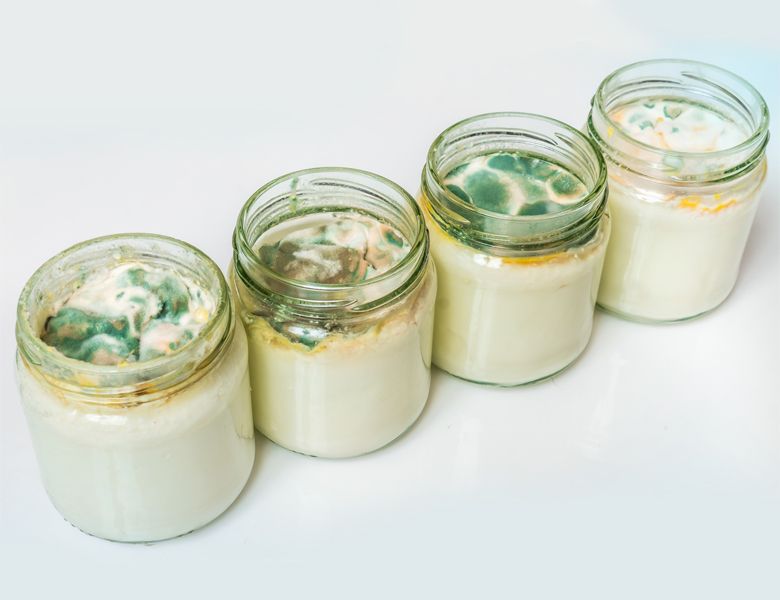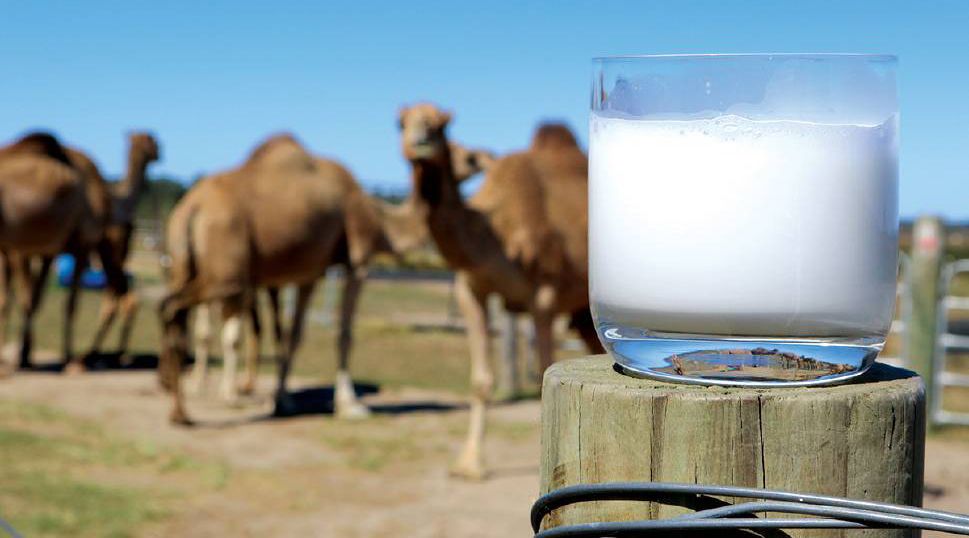Factors affecting probiotic viability in yogurt

- | آتاماد |
- Viewer: 180
There are three important criteria in the production of probiotic yogurt, which can impact the added value of the final product:
1. a decline in the viability of probiotic bacteria during processing and the storage period
2. a comparatively higher incubation time is needed compared with conventional yogurt
3. unacceptable organoleptic traits of the ultimate yogurt
Importantly, yogurts containing probiotic bacteria should have higher than 106 CFU of viable probiotics per serving portion, until the consumption time. Numerous factors are effective in the determination of probiotics' survival in fermented dairy products.
1. Probiotic strain types and starter cultures
The strain types determine the effect of all the discussed factors on the probiotic viability in yogurt and species have starkly different tolerability with exposed to various conditions. Lactobacilli are mostly more potent than bifidobacteria in terms of resistance to acid and oxygen, with a few exceptions. A pH level of lower than 4.6 is detrimental for bifidobacteria species. It was reported that oxygen-tolerant species have high amounts of oxidoreductases to eliminate oxygen from the cellular medium. Strangely, unlike bifidobacteria, the impact of hydrogen peroxide on L. acidophilus has been observed to be maximum. Therefore, L. acidophilus may lose its viability, compared with bifidobacteria, in combination with L. delbrueckii subsp. bulgaricus is considered a recognized hydrogen peroxide generator.
Storage time
Suitable storage times for probiotic yogurt are also strain-specific. It was revealed that the highest viable cells of L. acidophilus and B. lactis through 20 days of storage were observed at 2°C and 8°C, respectively. It is important to note that the overall acceptability of probiotic yogurt decreases with lengthening the storage time. Additionally, it was reported that a combination of probiotic strains in yogurt production may cause poor growth and survival levels during cold storage in comparison with a single strain, most possibly because of the antagonistic activities.
Furthermore, due to the production of acetic and lactic acids during an ideal fermentation condition, and also as a result of different metabolic compounds generation by LAB, there is a possibility of alteration in organoleptic properties. Thus, their surplus growth creates the products with a final taste and aroma like vinegar. The inoculum level of probiotic strains could also affect their viability during fermentation and cold storage. It is obvious that using a sufficient initial inoculum rate of probiotic bacteria could ensure the suggested therapeutic effect at the consumption time, and an excessive inoculation amount may result in nutrient deficiencies, decreased survival levels, and change in the flavor.
The interaction between starter culture and probiotic bacteria
The activities of the yogurt starter bacteria may sometimes threaten the survival of the probiotic bacteria. So, interaction between starter organisms (S. thermophilus and L. delbrueckii ssp. bulgaricus) and probiotic bacteria is regarded as an essential aspect in yogurt production. Post acidification, i.e., the production of lactic acid during fermentation and cold storage, and hydrogen peroxide generation by L. delbrueckii ssp. bulgaricus in yogurt could adversely affect probiotic bacteria like bifidobacteria and L. acidophilus. It is worth noting that a higher incubation temperature (44°C) during fermentation enhances the growth of L. delbrueckii ssp. bulgaricus. Thus, the higher rate of acid and hydrogen peroxide production by L. delbrueckii ssp. bulgaricus could suppress the probiotic growth and leave a negative impact on their viability. It was suggested that H2O2 is the most potent component responsible for the decline in L. acidophilus survival and growth due to not possessing catalase for hydrolyzing this toxic substrate.
Thus, incubation at 37°C, besides being the ideal growth temperature for the probiotic bacteria, also has a positive influence on the synergistic correlation between probiotics and L. delbrueckii ssp. bulgaricus because of the reduction in its growth rate. This synergistic effect may be attributed to the partial breakdown of casein protein to some peptides and free amino acids by L. delbrueckii ssp. bulgaricus, which facilitates the consumption of milk proteins by probiotic bacteria. Nevertheless, it was observed that S. thermophilus in yogurt may usually support the growth of probiotic strains, mainly bifidobacteria, by its ability in oxygen consumption.
2. Titratable acidity and pH
The pH and titratable acidity strongly influence the viability and metabolic features of probiotic bacteria. The ideal pH for optimum growth of bifidobacteria and lactobacillus species varies between 6–7 and 5.5–6.09, respectively.
Acid production by starter cultures is the major reason for the decline of probiotic viability in yogurt during storage, which is related to the strain’s tolerance for acid. For instance, it is obvious that lactobacilli are more acid-tolerant and survive in yogurt with a pH range of 3.7 to 4.3. It was reported that post-acidification by LABs could be avoided by applying heat shock of yogurt starter bacteria (58°C, 5 min) that could enhance the viability of probiotic bacteria. Interestingly, at low pH, the presence of non-ionized organic acid may alleviate the detrimental impact of acid on probiotic bacteria. The amount of organic acid was identified to have a higher effect on probiotic viability than the pH.
3. Oxygen presence
Oxygen content and oxidation-reduction potential are the most important factors affecting probiotic survival during the storage period. Molecular oxygen is an important factor in causing oxidative reactions and as a result, bacterial instability and has a destructive effect on probiotic growth and survival, because most probiotic species are obligate anaerobes. The high level of oxygen in the packaging during storage and the penetration of oxygen into the product causes a decrease in the viability of lactobacillus acidophilus and bifidobacteria in fermented products. In addition, processing procedures in yogurt production, such as stirring and mixing steps introduce high levels of oxygen into the final product in addition to releasing oxygen during.
In fact, oxygen affects probiotics in three stages:
Direct effect on some cells, production of toxic peroxide in the presence of oxygen by some starters, and production of free radicals from oxidation of some compounds such as fats. The degree of oxygen sensitivity is different among probiotic species and subspecies. Bifidobacteria are more sensitive to oxygen than Lactobacillus acidophilus due to their anaerobic nature.
The solution
Adopting methods to decrease oxygen levels is considered to be highly effective in maintaining probiotic bacteria, such as vacuum packaging, using packaging materials with low oxygen permeability, adding oxygen absorbers, and controlling the production process so that the minimum amount of dissolved oxygen enters the product. Also, other factors such as the thickness of the packaging material, choosing proper packaging materials containing oxygen barriers, and oxygen scavengers may have positive impacts on probiotic survival. Other options include the addition of chemicals, antioxidants, and using Lactococcus lactis to scavenge environmental oxygen, or enzymatic treatments (such as glucose oxidase) could be effective in the maintenance of probiotic cells.
Glass packaging with low oxygen permeability can also help probiotics survive. However, plastic packaging such as polyethylene (PE) is quite permeable to oxygen and allows oxygen diffusion into yogurt samples during storage. The use of plastic films with oxygen inhibition properties, active packaging with oxygen absorbers, and the use of laminated polymer materials with high oxygen inhibition capability together with oxygen absorber films have been suggested in many studies. However, due to the high cost and transportation risks of such packaging, manufacturers prefer to use plastic packaging, so alternative methods such as vacuum packaging, the use of oxygen absorbers, and active packaging with oxygen-inhibiting materials can potentially be used.

4. Temperature and time of fermentation and storage
Fermentation
Fermentation temperature is considered a critical factor influencing the survival levels of probiotic bacteria as well as the sensory characteristics of probiotic yogurt. The optimal growth temperature of most probiotic bacteria varies between 37-43°C, with the exception of some species such as L. acidophilus that can grow at higher temperatures (40-42°C). Moreover, it has been shown that the survival levels of probiotic during fermentation at 40°C was higher than at 44°C, probably due to the higher amount of acetic acid production by bifidobacteria species and the antagonistic effect of LABs. Obviously, temperatures higher than 45°C in some processing steps have negative effects on the growth and viability of probiotics. Therefore, to maintain probiotic counts, shorter fermentation time at higher temperatures is required.
In order to have more survival, it is suggested to add probiotics at the end of pasteurization. However, the probiotic resistance to temperature can be enhanced by mild heat processing before use. This procedure may elevate their tolerance to further heat stress during the fermentation process over 300-fold.
Storage
The optimal storage temperature is 4-5°C for probiotics and -18°C for frozen probiotics. LABs and probiotics grow during the fermentation period, their counts follow a falling trend during cold storage. It is stated that storage at 2°C for 20 days led to the highest survival rate of L. acidophilus, whereas as for the bifidobacteria the greatest survival was observed at 8°C.
All in all, the fermentation process at 37°C and 44°C for almost 6h was required to attain the highest and lowest probiotic survival levels, respectively. Considering higher cold storage (5 or 8°C), L. delbruecki ssp. Bulgaricus bacteria grow more quickly than at 2°C, hence the levels of produced metabolites especially hydrogen peroxide and lactic acid are developed which are detrimental to probiotic survival. Generally, higher storage temperature causes a rise in the metabolic activities of LABs, which escalates their death ratio. It is obvious that storing yogurt at a lower temperature (2°C) is associated with a longer storage period due to less production of detrimental metabolites.
5. Other processing conditions
Heat treatment
Heat treatment (time and temperature) of milk during bio-yogurt production also plays a partial role in probiotic viable counts. It has been observed that heat treatments of milk at 95 °C for 15 min significantly augmented the highest probiotic. This can be explained through the removal of competitive bacteria in the milk as well as the enhancement of the nutritional value of milk owing to the discharge of free amino acids and available peptides.
Homogenization
The homogenization process is another effective parameter that will influence the viable count of probiotics in yogurt products. Reportedly, higher pressures, temperatures, the and number of steps involved in this procedure may probably enhance probiotic viability during the yogurt storage period because of the inactivation of detrimental probiotic bacteriophages. Furthermore, these high pressures can produce more free amino acids and small peptides required for probiotic growth and survival during refrigerated storage. Two-stage homogenization may also break proteins and fat globules into relatively small compounds available to probiotic bacteria. The higher temperature could also liberate cysteine, remove oxygen, and create sulfur components all of which may enhance probiotic survival in yogurt.
6. Yogurt ingredients
The ingredients of yogurt can have several effects (protection, neutral, or harmful) on probiotic viability. Additives include sugars, sweeteners, salts, flavor compounds (diacetyl, acetaldehyde, and acetone), colorants, nisin, natamycin, lysozyme, and nitrite. These compounds affect the growth and survival of probiotic bacteria, and their higher dose can prevent the growth of probiotic bacteria during storage.
Improve probiotics growth rate
Probiotic bacteria grow poorly in milk. However, ingredients like vitamins, sugar, casein, antioxidants, transglutaminase, minerals, amino acids (like L-cysteine), cereals, vegetables, fruits, WPC, and yeast extract used in yogurt production improve their growth rate by providing essential nutritive factors and proper conditions (pH, redox potential).
It was shown that using fruit in stirred yogurt could improve the survival of L. acidophilus, compared with plain yogurt, possibly because of obtaining the nutrients and lowering counts of L. delbrueckii ssp. bulgaricus. Also, the ingredients listed improve the quality of probiotic yogurt including texture and decreasing syneresis without any significant effects on sensory properties.
Prebiotics
Some prebiotics, including fructo- and galacto-oligosaccharides, have a positive effect on the survival of probiotic bacteria, especially bifidobacteria, during shelf life. Several studies demonstrated that yogurt supplemented with optimum amounts of common flavoring materials like strawberry, peach, banana, and vanilla did not influence the survival of the probiotics negatively. However, it is worthwhile to mention that the use of some fruit juices or their pulps may adversely affect the survival of some probiotic bacteria in yogurt. Some of these ingredients used in probiotic yogurt manufacture are considered to be prebiotic compounds that could enhance probiotic viability by intensifying their growth in addition to protecting them against the detrimental factors presented in yogurt.
The fat content
The fat content of yogurt is another important factor affecting probiotic viability. Full-fat yogurt acts as an inhibitory matrix for the growth of bifidobacterium species, increasing acid development during storage. Thus, the composition of milk used in yogurt manufacture can determine probiotic viability.
Conclusion
Probiotic yogurt is a popular functional food around the world, which makes the acceptability of probiotic yogurt by customers possible. Several health benefits, including the prevention of infection in the respiratory and gastrointestinal tract, reduction of blood cholesterol, deceleration of HIV progression, improvement of glucose metabolism, and control of type 2 diabetes and obesity are attributed to the regular consumption of probiotic yogurt. Keeping the viability of probiotic bacteria during processing and storage at the target sites in the human body requires constant monitoring. Several factors, including pH, titratable acidity, oxygen, processing conditions (like heat treatment, homogenization, and fermentation), starter culture (yogurt bacteria and probiotic type), and different ingredients used in yogurt production (such as whey proteins, WPC, antioxidants, and fruits), influence the survival levels of probiotic bacteria.
Reference:
GET IN TOUCH
Copyright © 2023 Atamad.com All right reserved
Website design and SEO services by Seohama team – Web hosting by Sarverhama
Copyright © 2023 Atamad.com All right reserved
Website design and SEO services by Seohama team – Web hosting by Sarverhama








